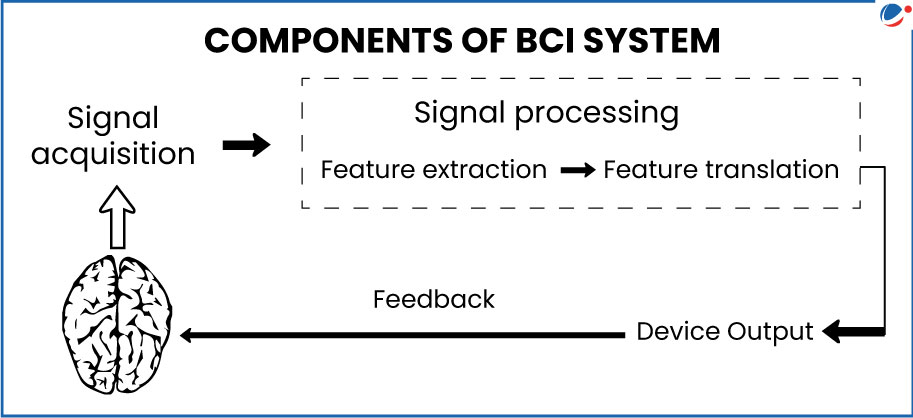The system allows a paralysed person to simply imagine the movement he wishes to execute while the sensors record his brain activity to train an AI, which is used to actuate a robotic arm.
About BCI

- Meaning: It is a computer-based system that acquires brain signals produced by the Central Nervous System (CNS), analyses them, and translates them into commands that are relayed to an output device for a desired action.
- It is not a voice-activated or muscle-activated communication system or a device to read minds.
- Components of a BCI System
- Signal acquisition: Involves measurement of brain signals, which are digitized and transmitted to a computer.
- Feature extraction: Process of analysing the signals to distinguish pertinent signal characteristics (featuring person's intent) from extraneous content.
- Feature Translation Algorithm: Converts the features into the appropriate commands for the output device.
- Device Output: Through letter selection, cursor control, robotic arm operation, etc.
Key Applications of BCI
- Communication and control: Provide an alternative communication channel for disabled persons.
- Medical: Aids prevention (smoking, motion sickness, etc.), detection and diagnosis (brain or sleep disorders), and rehabilitation and restoration (Brain Strokes, etc.), etc.
- Security and Authentication: Uses unique brainwave signatures for secure identity verification, reducing vulnerabilities linked to passwords and biometrics.
- Education and Training: Determine the degree of clearness of studied information, personalized interaction, etc.




